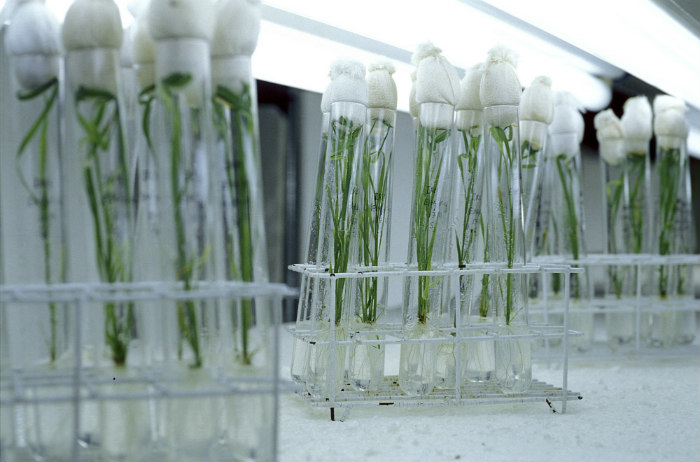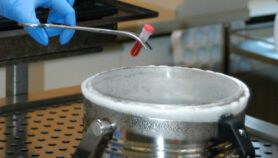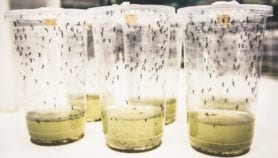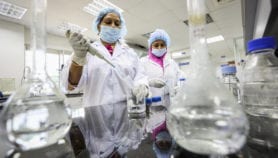By: Jayson Merkley
Send to a friend
The details you provide on this page will not be used to send unsolicited email, and will not be sold to a 3rd party. See privacy policy.
Poor nations shouldn’t miss out on advances such as lab-cultured meat and low-methane GM rice, says Jayson Merkley.
Industrialised nations contain 20 per cent of the global population, yet historically are responsible for roughly 75 per cent of greenhouse gas (GHG) emissions. This amounts to a moral debt to developing nations — a debt richer countries can start to pay off by embracing biotech solutions and eating fewer animal products.
The evidence of disproportionate harm from climate change affecting people in the developing world ought to weigh quite heavily on the collective consciences of nations who bear the primary responsibility — including individuals.
Conscience comes into play for many Western consumers when it comes to activities such as recycling waste or installing solar panels. But conversations surrounding climate often focus on energy production. Many fail to recognise that agriculture, too, is a major driver of climate change.
A third of all GHG emissions come directly from agriculture: carbon dioxide sinks disappear when forests are cleared for crops and pasture; nitrous oxide levels increase with fertiliser use; and rice cultivation and cattle rearing release methane.
This means that clean energy goals just don’t address the whole problem. Global GHG emissions from livestock (7.1 billion tonnes each year) can exceed all those from transport (seven billion tonnes in 2010). [1,2]
And this will become increasingly relevant as meat consumption continues to rise in the developing world. Food and Agriculture Organization data shows it jumped from ten kilograms per person a year in the 1960s to 26 kilograms in 2000, and could hit 37 kilograms by 2030.
Producing animal products, particularly beef, is also enormously energy inefficient: it takes anywhere from five to 20 kilograms of feed to produce a single kilogram of beef. [3]
“Population growth creates a dilemma: either dramatically increase rice yields and accelerate GHG emissions — or sacrifice food security.”
Jayson Merkley
So increased meat consumption directly undermines food security while also deepening the global GHG footprint. A 30 per cent spike in the world’s population expected by 2050 will need to be met with a shockingly disproportionate 87 per cent increase in staple grain yields and a 60-110 per cent increase in overall agricultural yields, which are driven by growing consumption of meat and biofuels.
It would be hypocritical to ask the developing world to slow its consumption when uninhibited consumption in the Western world largely caused the problem. But in addition to the moral imperative to change individual consumption patterns, there is a need for policies that embrace and encourage access to genetic engineering.
GM carbon cuts
Despite public fear of genetic engineering causing environmental harm, it is already cutting GHG emissions. Widespread use of crops engineered for herbicide tolerance has drastically reduced the need for tillage — and less tilling means less GHG churned from the soil into the atmosphere. In 2013 alone, genetically engineered crops reduced global carbon emissions by an amount equivalent to removing 12.4 million cars from the road. [4]
“The goal of reducing GHG emissions has helped inspire a new biotech sector that aims for a ‘post-animal bio-economy’.”
Jayson Merkley
However, public misapprehension and the policies it engenders prevent other genetically engineered GHG solutions from taking off. Rice is one example. This is a staple crop for billions of people in the developing world. But its cultivation contributes a staggering amount of methane, which is 25 times more potent as a greenhouse gas than carbon dioxide. Population growth creates a dilemma: either dramatically increase rice yields and accelerate GHG emissions — or sacrifice food security.
The answer could lie in a genetically engineered, low-methane variety that just finished three years of field trials. It still needs to successfully navigate the regulatory processes and fear-laden consumer markets where ‘golden rice’ — a variety developed to tackle vitamin A deficiency — continues to stall.
The goal of reducing GHG emissions has helped inspire a new biotech sector that aims for a ‘post-animal bio-economy’. US start-up Memphis Meats has developed a way to produce meat in the lab. This method requires 90 per cent fewer greenhouse emissions to produce a pound of beef compared with raising cattle — difficult to ignore.
Another pioneering group is a collective of crowdfunded ‘biohackers’ at Counter Culture Labs. They are involved in the Real Vegan Cheese project, which aims to remove cows from cheese production by genetically modifying common baker’s yeast so it produces dairy proteins.
Both projects are still years away from a marketable product — it remains unclear how quickly they can be marketed at a price that competes with conventional animal foods. But they are steps in the right direction that could be even more effective in mitigating climate change if also made available in the developing world.
Biosafety laws needed
Growing consumer demand for beef and dairy make animal agriculture enterprises in the developing world a tempting target for Western investors. Multinational food company Danone, for example, has already invested heavily in several African dairy operations. A cost-competitive, environmentally friendly alternative might shift the investor balance.
Real Vegan Cheese is being developed as an open-source technology with free access to ‘recipes’. Sustainable, locally owned cheese production, perhaps in a collective community-owned facility such as Counter Culture Labs, could become a real possibility for virtually everyone, the developing world included.
But to get there, these new technologies need support now. Evidence for their benefits is available. Implementing them will require clear regulations, as provided by the Cartagena protocol on biosafety, from the point that they are conceived until they reach market. [5]
Uganda — which failed to ratify a biosafety law this month — and other developing countries risk falling behind, unable to benefit from crops engineered to resist disease.
They may also set themselves up for future reliance on Western corporate-controlled technologies. The sooner biosafety policies are created, the sooner local scientists can develop local solutions for local food security concerns.
Genetic engineering won’t solve every problem. It is only one tool, but the climate challenge is daunting enough to justify using every tool. Along with sensible energy policies, embracing biotechnology and reducing consumption of animal products can help avoid a worst-case climate change scenario.
Jayson Merkley is a science advocate and global leadership fellow of the Cornell Alliance for Science in the United States. He is a cofounder at Vegan GMO, an NGO promoting access to biotechnology to increase quality of life for human and non-human animals. He can be contacted at [email protected]
References
[1] Tackling climate change through livestock: A global assessment of emissions and mitigation opportunities (FAO, 2013)
[2] Transport In: Climate change 2014: Mitigation of climate change — Working Group III contribution to the Fifth Assessment Report of the Intergovernmental Panel on Climate Change (IPCC, 2014)
[3] Nutrient requirements of beef cattle (The National Academies Press, 2000)
[4] Graham Brookes and Peter Barfoot GM crops: global socio-economic and environmental impacts 1996-2013 (PG Economics, May 2015)
[5] Cartegana protocol on biosafety (Secretariat of the Convention on Biological Diversity, 2000)














